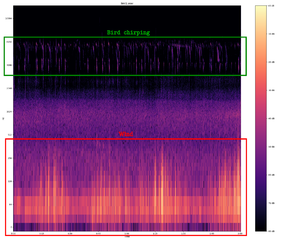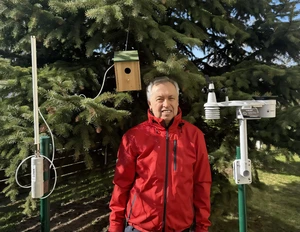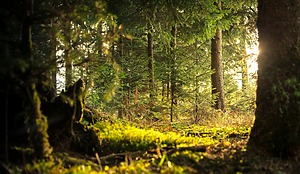To improve forest protection, KTU researchers have employed artificial intelligence (AI) and data analysis. These technologies enable not only real-time forest monitoring but also predictive analysis, allowing early intervention in response to environmental changes.
Spruce trees are particularly affected by climate change
One key solution is the forest regeneration dynamics model, which forecasts how forests will grow and change over time. The model tracks tree age groups and calculates probabilities for tree transitions from one age group to another by analysing growth and mortality rates.
Head of the Real time computer center (RLKSC), data analysis expert, Prof. Robertas Damaševičius, identifies core advantages of the model: it can identify which tree species are best suited to different environments and where they should be planted.
“It can assist in planning mixed forest replanting to enhance resilience against climate change, as well as predict where and when certain species might become more vulnerable to pests, enabling preventive measures. This tool supports forest conservation, biodiversity maintenance, and ecosystem services by optimising funding allocation and compensation for forest owners,” says Maskeliūnas.
The model is based on advanced statistical methods. The Markov chain model calculates how a forest transitions from one state to another, based on current conditions and probabilistic growth and mortality rates. “This allows us to predict how many young trees will survive or die due to diseases or pests, helping to make more informed forest management decisions,” explains KTU’s Faculty of Informatics professor.
Additionally, a multidirectional time series decomposition distinguishes long-term trends in forest growth from seasonal changes or unexpected environmental factors such as droughts or pest outbreaks. Combining these methods provides a more comprehensive view of forest ecosystems, allowing for more accurate forecasting under different environmental conditions.
The model has also been applied to assess Lithuania’s forest situation, revealing that spruce trees are particularly affected by climate change, becoming increasingly vulnerable due to longer dry periods in summer and warmer winters. “Spruce trees, although they grow rapidly in young forests, experience higher mortality rates in later life stages. This is linked to reduced resistance to environmental stress,” says Maskeliūnas.
Forest sounds reveal ecosystem health






